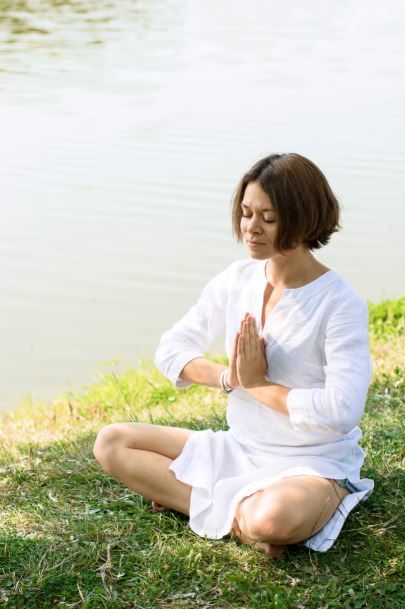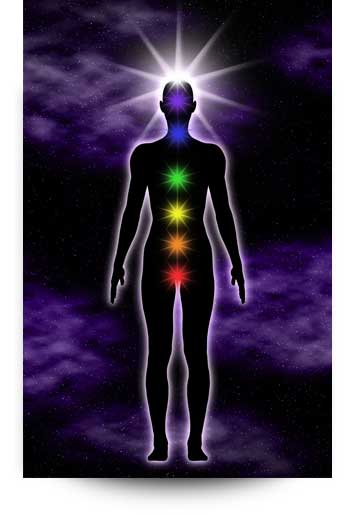Kundalini meditation is a slow and gradual process, carried out in different ways, with minor variations. The goal of all techniques is to raise Kundalini energy. This meditation must be carried out in a balanced and responsible way. Your body, mind, and emotions must be ready to accept a strong energy from your body. It may be risky if the energy is not well received. So, be patient and well prepared before you dive into Kundalini meditation.
Much like taking a shower every day cleanses the physical body; yogis see Kundalini meditation as a way to cleanse the mind. It’s a way to rejuvenate after a busy day, handle temporary stress, and/or counteract fatigue. It also serves to help stabilize your energies (or chakras) and relax your mind so that you respond with intent rather than just responding to your thoughts and environment.
The practice should be thought of as a technique, as opposed to a belief system that lets us eliminate the clutter of the world and gain access to the inner self. Also, rather than offering immediate relief, enlightenment, or “uncoiling,” proponents claim that perseverance and continuous practice are required to achieve maximum benefits.
Benefits:
• Aid focus and prevent random thoughts from tossing you out of balance.
• Breaks your regular everyday habits and carry you to a state of mindfulness.
• Brings stability to the mind, body, and soul.
• Develops your creative capacity to conquer life’s challenges.
• Generates the body’s awareness.
• Improves the neural pattern and emotional balance.
• Helps to alleviate anxiety.
• Helps to relieve tension and to find a sense of peace.
• Increases cognitive ability.
• Kundalini Yoga energizes your brain and gives you constant bliss.
• Makes you look younger with a youthful face.
• Helps you understand the cosmic force of infinity.
• Purifies the body and makes you truly aware of yourself and your surroundings.
• Makes you conscious of the smallest incident inside your body.
• Improves sleep and sleep disorders.
• Shows the right way to breathe (into your diaphragm) and increase your lung capacity.
Drishti for the Eyes

You can choose from any Drishti you like from the list below:
1. At the Third Eye Point: The closed eyes are softly elevated to the Brow Point, a little above the eyebrows at the middle of the forehead. This part of the forehead corresponds to the Sixth Chakra.
• Activates the pituitary gland and the Sushumna Nadi.
2. At the Tip of the Nose: The eyes are slightly crossed, gazing around the nose to the peak of the tip.
• Balances Ida, Pingala, and Sushumna Nadi.
• Activates the pineal gland and the brain’s frontal lobe; regulates the subconscious.
3. At the Tip of the Chin: Closed eyes fall over to the center of the chin. This location refers to the Moon Center.
• Cooling and soothing.
4. At the Top of the Head: Closed eyes roll up, as if staring from the very top, the center of the head. This is the Crown Chakra.
• Stimulates the pineal gland and the Crown Chakra.
5. 1/10th Open (9/10th Closed): Eyelids are light and comfortable, leaving a slight space between them. The direction of eye focus can differ as indicated by the guidance of Yogi Bhajan.
• Relaxes and develops intuition.
How to Do:
1. To start, find a peaceful spot where you can sit comfortably. You should lie on a meditation pillow with crossed legs and a straight back. If you have sciatica or if your stance triggers pain, lie in a meditation chair. Please remember not to lean back in the chair. Sitting tall with a straight spine is vital, whether you’re sitting in a meditation chair or on a meditation pillow. Gather your palms together in a prayer meditation pose in front of your heart.
2. After a few seconds of pause, put your hands in different formations, known as “Mudras,” which are assumed to support the energy flow to particular areas of the brain. Gyan Mudra is the most common in Kundalini meditation. Join your thumb and index finger, slightly pressuring the index finger from your thumb. This Mudra is believed to stimulate awareness and help to create a sense of transparency and peace.
3. Close your eyes and concentrate your Drishti. As you breathe deeply, count to 4 and hold your breath for a few seconds. Do the same thing as you exhale. Pull your navel towards your spine on each inhalation and exhalation. Remain mindful of your yoga posture as you breathe.
4. You may try to chant the mantra “Sa Ta Na Ma,” which some interpret as “infinity, life, death, and rebirth.” Playing this mantra in your head when meditating may help you to concentrate and bring your mind back to the present when your mind wanders or you become nervous or disturbed.
Tip: Finding a dedicated meditation space in your home will help you make a stronger commitment to your practice. A mediation room gives you the space you need to eliminate distraction and let go. Morning meditation in a peaceful space is a perfect way to start the day. Creating your own special space will make it easier to adhere to a regular morning meditation routine.
Timing:

If you’re curious about how long to meditate, some claim that Kundalini meditation can be performed over varying periods of time for precise effects. While there is little medical evidence about how the period of meditation impacts your body, practitioners claim that 3-minute meditation impacts the circulation of blood and the electromagnetic field of the body; 11-minute meditation activates and improves the glandular and nervous systems; and 31-minute intense meditation impacts all your cells and clears the subconscious.
When you’re first starting out, try not to think about how long you’ve been meditating. It’s suggested to begin with three minutes, if you’re new to meditation. It’s natural to feel uneasy or disturbed, so stick with it. You can take your breathing pillow and do a morning meditation, an evening meditation, or practice any time of the day. How long to meditate would be something that you would decide intuitively, based on the day. No matter how long you meditate, you can find that it removes stress, gives you energy, helps you concentrate, and lifts your spirits.
A Few Words
Know that it’s fine to start small—and it can be hard to implement mediation into your daily life. At first, even two minutes of meditation could feel like a challenge, yet don’t give up. It takes time to relax your mind, and even a few minutes will have a positive effect.
Be kind to yourself, and remember that your meditation doesn’t have to be ideal. It’s all right to adjust it if you feel discomfort or get distracted, what matters is that you’re showing up for yourself.
Over time, it would be easier to bring yourself into a meditative state. Once you have the capacity, the purpose of this new state of awareness is to transfer into other areas of your life. Rather than merely responding to what happens to you, this practice can help you control your feelings, emotions, and behaviors with heightened purpose and insight.



